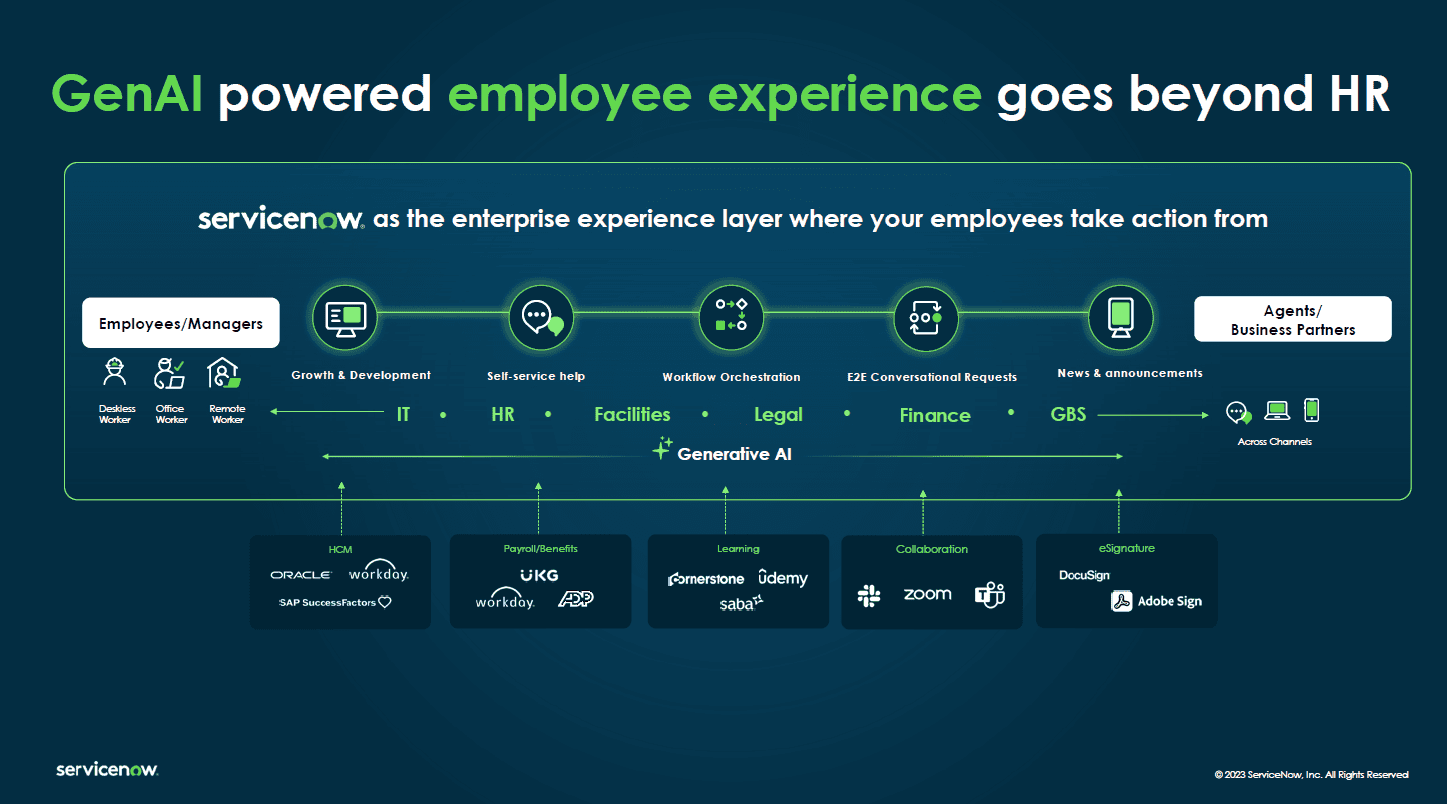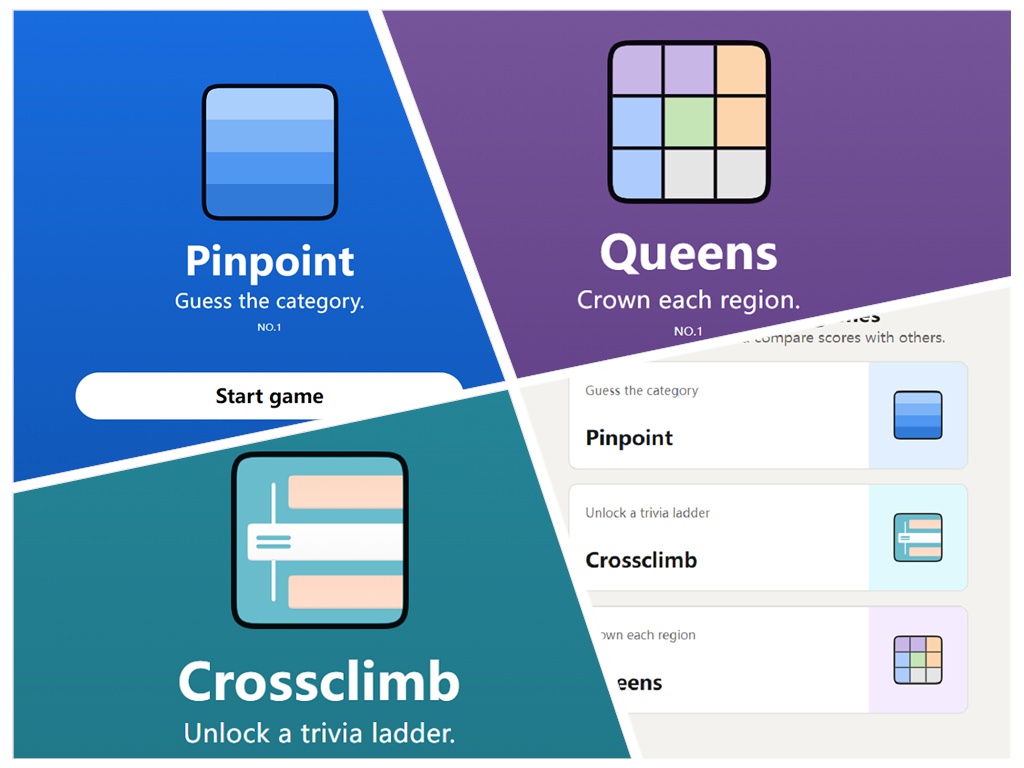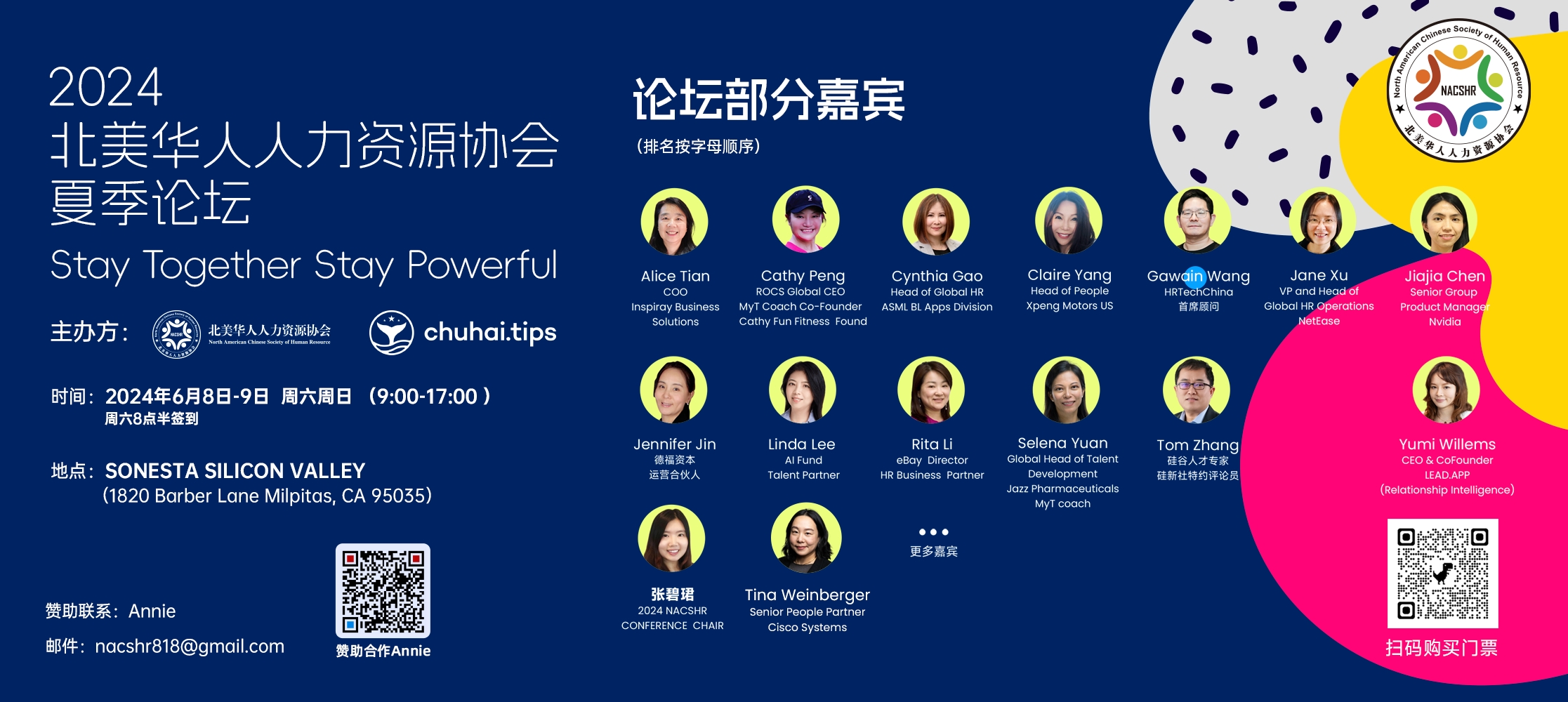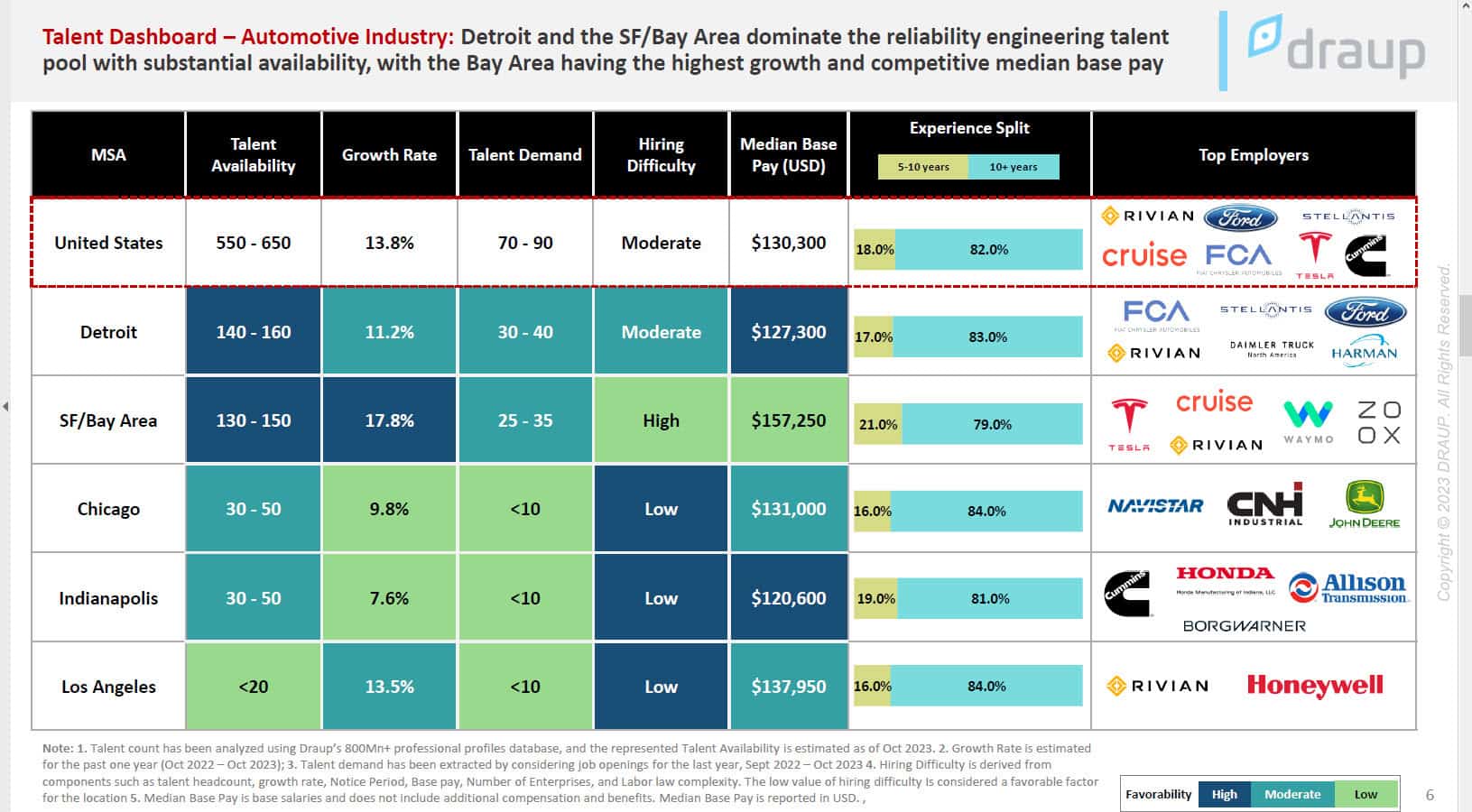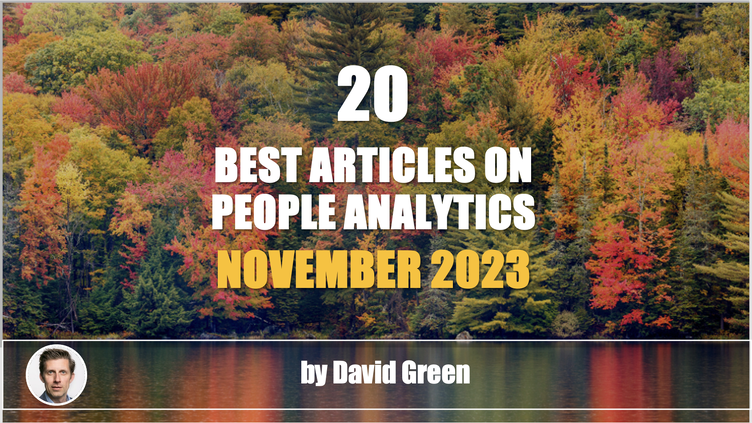
November has been a month of travel to three continents where I’ve attended and spoken at four events, learned a lot about how companies are using people analytics, AI and machine learning in HR, and met a lot of talented HR professionals. The month started in Chicago, where Berube, Derek, Jack Liu and their team hosted North American member companies of the Insight222 People Analytics Program at McDonalds’ iconic Hamburger University.
Two weeks later I was in Barcelona for Workday Rising EMEA, where I spoke on stage with Caroline O'Reilly, GM Workday Analytics, about the future of people analytics and workforce planning in the age of AI, and also did a book signing of Excellence in People Analytics. On the following day, also at Rising, I had the pleasure of presenting findings from the recently published Insight222 People Analytics Trends 2023 study. For more on the takeaways from Workday Rising EMEA, read this edition of the Digital HR Leaders newsletter, and check out the series of articles by Alexandra Nawrat on the UNLEASH blog such as AI regulation is like the movie Everything Everywhere All At Once.
I’ve just returned from Copenhagen where the final in-person Peer Meeting of 2023 took place for European member companies of the Insight222 People Analytics Program, where attendees explored in depth two topics that are critical to the success of people analytics – influence and value. Thanks to Alan Susi, Kevin Erikson and Claude-Alain Descloux, and Lucie Vottova for sharing some of the brilliant work they are doing at S&P Global, Novartis and ING respectively.
Tomorrow, I will embark on my final trip in November – to India, where I will be speaking on People Analytics 2.0: Unlocking the Transformative Power of Data and AI in HR at the Indeed FutureWorks event in Bangalore.

Benchmark your organisation against the Leading Companies in People Analytics
As previewed above, November also saw the release of the fourth annual Insight222 People Analytics Trends study, which this year was informed by a survey of 271 global organisations. In addition, we’ve also developed the Leading Companies Diagnostic, which enables you to get a personalised report into how your organisation rates against Leading Companies in People Analytics. Take the Leading Companies Diagnostic here.

Looking for a new role in people analytics or HR tech?
Before we get to this month’s collection of resources, I’d like to once again highlight the wonderful resource created by Richard Rosenow and the One Model team of open roles in people analytics and HR technology, which now numbers nearly 500 roles. This is another indicator of the continued growth in the field.
Share the love!
Enjoy reading the collection of resources for November and, if you do, please share some data driven HR love with your colleagues and networks. Thanks to the many of you who liked, shared and/or commented on October’s compendium (including those in the Comments below).
If you enjoy a weekly dose of curated learning (and the Digital HR Leaders podcast), the Insight222 newsletter: Digital HR Leaders newsletter is published every Tuesday – subscribe here.
JONATHAN FERRAR, NAOMI VERGHESE, AND HEIDI BINDER-MATSUO - Investing to Deliver Value: A New Model for People Analytics | Article | Full Report | Diagnostic
People analytics continues to grow despite a challenging global economy. This is one of four key findings from the fourth annual Insight222 People Analytics Trends study. The other three are: (1) Measuring and delivering value, from people analytics efforts, is key for the impact of the function. (2) Developing relationships with C-suite and senior stakeholders is essential to deliver on key business priorities. (3) There are eight defined characteristics that Leading Companies display to create impact (see FIG 1). Every people analytics function, in any organisation, can now diagnose themselves against these eight characteristics. The Insight222 Leading Companies Model (see FIG 2) will help CHROs and people analytics leaders understand their current position and pinpoint the characteristics that will enable them to deliver more value. Kudos to my colleagues and authors of the report: Jonathan Ferrar, Naomi Verghese, and Heidi Binder-Matsuo, as well as the practitioners who contributed case studies: Jane Puckey, James Reynolds, Sharon Doherty (she/her), Alan Susi, Jaesun HA, Laura Wright Shubert, and Eden Britt.

FIG 1: The eight characteristics of Leading Companies. Source: Insight222 People Analytics Trends Report 2023

FIG 2: Leading Companies in People Analytics Model Source: Insight222 People Analytics Trends Report 2023
HEIN KNAPPEN - Boosting Growth: How People Analytics Elevates Enterprise Value
Hein J.M. Knaapen, formerly chief human resources officer at ING and now Managing Partner, Europe at CEO.works, provides a compelling narrative on the profound impact of people analytics on business success. Hein sets out that when used effectively, people analytics (1) Uncovers strategic opportunities driven by effective people management. (2) Provides actionable insights into performance challenges. (3) Enhances employee engagement and productivity. (4) Establishes a robust link between business needs and HR solutions.
People analytics helps build a more solid bridge between business needs and HR interventions. It values evidence over assumptions. It moves HR professionals from supporting the overall business to providing specific, data-driven solutions to true business challenges.
AMIT MOHINDRA - Shapely Values: Game Theory in People Analytics
Amit Mohindra is one of the pioneering practitioners in people analytics, having led functions in companies including Apple, McKesson and Wayfair, lectured on people analytics at Stanford, and published a number of thoughtful articles such as the seminal Three "Laws" of Workforce Analytics. In his latest piece, Amit explores how people analytics can benefit from the connection between cooperative game theory and machine learning, and provides an example of a force plot (see FIG 3): “The red sections represent the factors that push attrition risk higher, and the blue sections are the mitigating factors pushing attrition risk lower. The base value is the average attrition risk in the dataset and is, therefore, the same in both plots.”
Explaining AI models, especially via compelling visualizations, builds comfort with and confidence in people analytics among decision-makers in HR and the business that drives adoption and improved talent, customer, and operational outcomes

FIG 3: Source – Amit Mohindra
JAPNEET KAUR AND NITIN RAZDAN - People analytics maturity in India
The country I receive the most enquiries about people analytics from is India. The progress of people analytics in the country is significant as this study by Deloitte’s Japneet Sachdeva and Nitin Razdan finds. Their research highlights four findings: (1) In the last 12 months Indian companies have shifted to realise value from people analytics across multiple dimensions, including individuals, teams, organisation, and society. (2) There is a significant shift in priorities from attrition last year to retention, well-being, and skills in 2023. (3) There is some hesitation around analytics and AI taking over decision-making from humans. (4) There is curiosity and enthusiasm around Gen AI and its potential in the People Analytics space.

FIG 4: The four levels of shared value (Source: Deloitte India)
MATTHEW HAMILTON - Do you understand probability better than a second grader? | LYDIA WU - People Analytics’ Awkward Place on Org Charts | STEPHANIE MURPHY – From Theory to Practice: Insights on the Future of People Analytics | KAI WEHMEYER - How Bertelsmann Group is Accelerating HR Transformation with People Analytics | ALLIE NAWRAT AND JULIEN LEGRET - Cartier HR data director: People analytics is a business necessity SEBASTIAN SZACHNOWSKI - This is the Last Call: Data Literacy for HR
November has seen a slew of articles published by current and recent people analytics leaders, which typically act as a spur and inspiration for the field. Six are highlighted here: (1) Matthew Hamilton, head of people analytics and HRIS at Protective Life, writes on the important of data literacy and probabilistic thinking to driving value from people analytics. (2) The prolific Lydia Wu continues her excellent ‘Oops, did I think that out loud’ series with an article on the vagaries of where people analytics resides in the organisation structure. (3) Stephanie Murphy, Ph.D. formerly the people analytics leader at Dell, answers ten questions for HRForecast related to the future of people analytics including the challenges and potential ethical concerns, and the role of people analytics in the future. (4) Kai Wehmeyer, Senior Vice President of Corporate HR Strategy & Systems at Bertelsmann shares his experience on effecting meaningful HR change in large, complex organisations. (5) Julien Legret shares aspects of the people analytics journey at Cartier with Alexandra Nawrat of UNLEASH. (6) Sebastian Szachnowski, Head of People Analytcis at Volvo Group, examines why HR professionals need to be more data literate, the skills they need, and how they can grow these skills.
Insights require action; otherwise, you are undertaking a costly science experiment
BCG AND THE WORLD FEDERATION OF PEOPLE MANAGEMENT ASSOCIATIONS - Creating People Advantage 2023: Set the Right People Priorities for Challenging Times Article | Full Report
Boston Consulting Group (BCG)’s bi-annual Creating People Advantage collaboration with the World Federation of People Management Associations (WFPMA) is consistently one of the best studies in our field. The 2023 edition continues this rich vein of quality. Two findings that stand out from the report are: (1) Only 35% of HR professionals agree that their company’s people management function is using relevant digital technologies. (2) Just 30% say that HR is using data and analytics to anticipate people challenges. This is despite People and HR strategy, planning, and analytics, being ranked as the #1 future people management topic (see FIG 5). There is a ton of insights in the report’s 28 pages, which includes a powerful visualisation (see FIG 6) of 32 people topics sorted by prioritisation. The report also outlines five recommendations for people management leaders to adopt to prepare for challenging times: (1) Leverage data to accurately plan for talent supply and demand. (2) Get better at talent acquisition. (3) Invest in upskilling and reskilling the current workforce. (4) Unlock value through AI. (5) Focus on change management and organizational development. A must read for any HR leader or professional. Kudos to the authors: Jens Stefan Baier, Vinciane Beauchene, Julie Bedard, Jean-Michel Caye, Dr. Philipp Kolo, Fang Ruan, Alexander Alonso, PhD SHRM-SCP, Anthony Ariganello, Kai H. Helfritz, Bob Morton, Chartered CCIPD, Lucas van Wees, and Wilson Wong.

FIG 5: Ranking of future importance of nine people management topics (Source: BCG)

FIG 6: The most pressing priorities for people leaders (Source: BCG)
KATHLEEN HOGAN – Microsoft’s Chief People Officer shares how AI will impact workers | What Can Copilot’s Earliest Users Teach Us About Generative AI at Work?
Two articles by Kathleen Hogan, chief people officer at Microsoft. In the first article, for Fast Company, Kathleen outlines three elements for companies to realise the benefits of AI for employees quickly: fostering an agility-based culture, reimagining how we work, and investing in deeper human skills. In the second article, Kathleen unveils the impact on productivity, creativity, and time of Copilot’s earliest users, with 70% saying they were more productive, 68% saying it improves the quality of their work, 64% saying that it helped them spend less time processing email, and 85% saying it helps them get to a good first draft faster (see also FIG 7).
AI is the defining technology of our time, creating a massive paradigm that will transform the way we work with even greater impact than the introduction of the PC

FIG 7: Copilot makes people more productive and creative, and saves time (Source: Microsoft)
PAUL LEONARDI - Helping Employees Succeed with Generative AI
Paul Leonardi unveils his STEP framework, which comprises four interrelated activities designed to help employees take advantage of new technologies: (1) segmenting tasks for either AI automation or AI augmentation; (2) transitioning tasks across work roles; (3) educating workers to take advantage of AI’s evolving capabilities; and (4) evaluating performance to reflect employees’ learning and the help they give others. Paul also highlights learnings from three companies that have adopted the STEP framework, including trusting employees to experiment, creating the right conditions for learning, and rethinking workforce planning. For more from Paul, tune in to his conversation with me on the Digital HR Leaders podcast: How To Help Your Teams Develop A Digital Mindset.
Because AI tools are constantly evolving, employees can’t learn new skills once and be done.

JOHANNES SUNDLO - 307 ChatGPT Prompts for CHROs | BERNARD MARR - How Data And AI Are Reshaping Contemporary HR Practices
Two helpful resources for HR leaders and professionals looking for practical guidance on incorporating generative AI into their work. (1) In an article from his FullStack HR blog, Johannes Sundlo sets out 307 ChatGPT prompts for CHROs covering topics such as organisational design and people strategy, recruitment, engagement and retention, learning and development, performance management, compensation, talent management, culture and engagement, workforce planning and analytics, change management and HR tech. (2) Bernard Marr writes about the rise of ‘intelligent HR’ in areas such as people analytics, recruitment, and performance management.
Intelligent HR is the strategic application of data, analytics, and artificial intelligence (AI) in human resources to improve decision-making, streamline operations, and create a better workplace experience.
JONATHAN GORDIN, SHARI CHERNACK, KAREN SHELLENBACK, AND YAMILE BRUZZA | MERCER - Evolving the CHRO role in a rapidly changing world of work
Forty-one percent of CHROs wish they had had a greater depth of knowledge in people analytics before stepping into their roles (see FIG 8). That is the one of the standout findings from Mercer’s recently published 2023 CHRO report. Many CHROs also conceded that they wish they had assumed the role with a greater understanding of business and strategy: “The ability to understand the business you are in is critical to success as a CHRO — the people strategy must be an extension of the business strategy.” The report, which was written by Jonathan Gordin, Shari Chernack, Karen Shellenback, and Yamile Bruzza, also digs into the growing importance of technology and analytics including the need for CHROs and their leadership teams to upskill themselves and act as role-models in areas such as data literacy, how the CHRO role will evolve (see also FIG 9), actions to develop HR leaders, and key attributes of CHROs.

FIG 8: What CHROs wished they’d known more about before assuming their roles (Source: Mercer)

FIG 9: How the CHRO role will evolve (Source: Mercer)
DAVE ULRICH, NORM SMALLWOOD, AND MIKE PANOWYK - Using Human Capability Information to Upgrade Business Decisions
Dave Ulrich, Norm Smallwood, and Mike Panowyk present their work on Governance and Guidance for Growth through Human Capability (G3HC). The article details their six-step framework (see FIG 10), which is built on gathering relevant human capital and business information and data to inform decision making in eight specific business use cases including board meetings, strategy discussions, and mergers, acquisitions, and divestitures. As ever, the guidance offered is insightful and practical, and even provides a helpful table of Dos and Don’ts for each of the six steps in the framework (see FIG 11).

FIG 10: Information choices to improve human capital (Source: Dave Ulrich et al)

FIG 11: G3HC Information Dos and Don’ts (Source: Dave Ulrich et al)
SIMMI MEHTA, KEVIN MOSS, AND DHRUV PATEL - Meet business outcomes by evolving to strategic workforce planning Article | Report
A helpful report by Simmi Mehta, Kevin Moss and Dhruv Patel of Deloitte to highlight their partnership with Anaplan and provide guidance to organisations on how they can pivot from operational to strategic workforce planning. The report explains how these two processes are interconnected, and outlines the considerations required to evolve to SWP (see FIG 12). Thanks to Brian Heger for highlighting this resource in his excellent Talent Edge newsletter.

FIG 12: Considerations to evolve to Strategic Workforce Planning (Source: Deloitte)
SIMON BRADBERRY AND BRUCE MORTON - Unlocking the Potential of a Skills-Based Organization
In their article for MIT Sloan Management Review, Simon Bradberry and Bruce Morton present their Workforce Target Operating Model (see FIG 13), which is assembled around four components: (1) The Workforce Business Partner (“…a senior and experienced individual, able to deconstruct roles into tasks and, where appropriate, look for automation opportunities, such as using AI). (2) The Workforce Acquisition Manager (“The WAM owns the execution for all hiring for their business area across all channels to market.”). (3) The Change Manager. (4) Sourcing. The authors then outline how the Workforce TOM is backed by a simplified workforce technology ecosystem and also provide examples illustrating real-world successes with the approach.

FIG 13: Workforce Target Operating Model (Source: Simon Bradberry and Bruce Morton)
ROBERT MOTION AND COLE NAPPER - What’s Old is New: The Quest for Excellence in Workforce Planning
As Robert Motion and Cole Napper highlight in their treatise on the topic, workforce planning is both an art and a science that has its root in data and strategy. Their article offers six lessons on the topic: (1). Strategy is hard, but that doesn’t make WFP impossible. (2) Workforce planning can both help fight and respond to the Wall Street earnings cycle pressure. (3) Process is necessary, but don’t overdo it. (4) Analytics is and will continue to be king. (5) Winning the war for talent requires Talent Intelligence. (6) We can’t fall in love with our own ideas.
As WFP practitioners, influencing with data is THE key to gaining credibility with the business. It shows that WFP is not “touchy-freely HR”, but data-driven and quantified.
KEN MATOS AND DIDIER ELZINGA - 7 charts that define the employee experience in 2023 | ANTONIO PANGALLO AND SARAH MARRS - The 5 employee experience trends redefining work in 2024
Two insight and data rich studies on the key trends in employee experience from two of the leading employee survey technology companies in the field. In the first article, Kenneth Matos and Didier Elzinga of Culture Amp explore the current EX trends, what employees need to connect with their work, and how companies can step up. They also provide some powerful visualisations including a breakdown of engagement by country and industry, the key drivers of engagement, and what successful companies are doing right (see FIG 14). In the second article, Antonio Pangallo, Ph.D. and Sarah Marrs highlight five key trends that emerged from Qualtrics’ 2024 EX Trends report: (1) Employees would rather AI assist them than manage them (see FIG 15). (2) Frontline employees are the most unhappy, poorly supported, and least trusting of leadership. (3) The new-job honeymoon phase has vanished. (4) Employees don’t mind if you monitor their work messages and emails. They want to be heard! (5) Some time in the office is better than none — just not 5 days.

FIG 14: What successful companies are doing right in employee experience (Source: Culture Amp)

FIG 15: Source - Qualtrics
The more positive you feel about your organisation, the more likely you are to believe that it will use AI for your benefit
TOMAS CHAMORRO-PREMUZIC - How to Strengthen Your Curiosity Muscle
The opening keynote at the recent Workday Rising EMEA event in Barcelona by Dr Tomas Chamorro-Premuzic was based on his recently published book, I, Human: AI, Automation, and the Quest to Reclaim What Makes Us Unique, which I highly recommend. Tomas is a prolific writer, and in one of his recent articles, for Harvard Business Review, he writes about one of the most critical and sought after dimensions of talent: curiosity – a skill that is vital for leadership effectiveness, learning, and career development. In the article, Tomas shares five recommendations to develop our curiosity muscle: (1) Ditch all excuses. (2) Find the right angle. (3) Change your routine. (4) Experiment. (5) When bored, just switch. For more from Tomas, please tune in to his recent conversation with me on the Digital HR Leaders podcast: How AI Can Unlock Human Potential and Make Work More Meaningful.
While we may not know what tomorrow’s jobs will be, employees’ motivation and ability to upskill and reskill for those jobs will significantly increase if they are curious.

MICHAEL ARENA - The Disruptive Nature of Small, Cohesive Teams
Jeff Bezos attributes much of Amazon’s ability to innovate at speed to ‘two-pizza teams’: “We try to create teams that are no larger than can be fed by two pizzas. We call that the two-pizza team rule.” In his article, Michael Arena explains the science behind why when operating in the right conditions, cohesive teams are able to move faster and innovate more boldly, and goes on to provide an example of a one of the marketplace leaders in AI (see FIG 16). He shares five ways to maximise cohesion and so foster speed and disruption: (1) Limit team size. (2) Streamline communication. (3) Encourage entrepreneurial activity. (4) Ask challenging questions. (5) Stimulate critical thinking.

FIG 16: Example of how a marketplace leader in AI operates with small, cohesive teams (Source: Michael Arena)
PAUL RUBENSTEIN - Prioritizing DEI Is the Secret to Future-Proofing Your Business
Paul Rubenstein outlines that rather than rolling back on investments in diversity, equity and inclusion and belonging programs, companies should instead broaden the scope to groups such as parents, new immigrants, and people with disabilities. Moreover, he explains why these efforts should be enriched with people analytics approaches like organisational network analysis, and smart compensation tools. For more from Paul, please tune in to his recent conversation with me on the Digital HR Leaders podcast: How to transform HR practices with data.
Pledges and statements are nice, but data lights the path to accountability and change.

STELA LUPUSHOR - Let’s talk about age(ism) in the age of generative AI
Stela Lupushor explains the business benefits of investing in age-diverse teams: (1) More productive teams (“Age-diverse teams are generally more productive and can lead to an increase in overall productivity by up to 12%”). (2) Better decisions (“Age-diverse teams make better decisions 73% of the time”). (3) Higher retention. Stela also outlines ways that generative AI can be used to influence gendered ageism at work.
Organizations that choose to fight ageism and embrace an age-diverse workforce position themselves for long-term success and competitive advantage
Much of the innovation in the field continues to be driven by the vendor community, and I’ve picked out a few resources from November that I recommend readers delve into:

FIG 17: Source - TechWolf

FIG 18: Using ONA to find optimal team (Source: Worklytics)

FIG 19: Source – Cognitive Talent Solutions

FIG 20: Source – Revelio Labs
CHROs should be aware of global AI trends and regulations, especially if their organization operates internationally.”
DAVID WHITE AND SHUJAAT AHMAD - Driving culture change for business outcomes
Unfortunately, I wasn’t able to attend the recent LinkedIn Talent Connect in New York, but fortunately all the sessions from the event are now available to view here. I particularly enjoyed this session with David White and Shujaat Ahmad, leaders inLinkedIn’s People Analytics team. In their talk, David and Shujaat explain how to use analytics to shape culture and drive business outcomes.
FRANCES FREI AND ANNE MORRISS - Move Fast and Fix Things: The Trusted Leader's Guide to Solving Hard Problems
The new book from leadership experts Frances Frei and Anne Morriss, who have just been included on the prestigious Thinkers 50 list for 2023, is a highly recommended read. In Move Fast and Fix Things, Frances and Anne reinvent the playbook for how to lead change, based on their work with companies including Uber, Riot Games and ServiceNow. The book lays out a five-step process to moving fast and fixing things: (1). Identify the real problem holding you back. (2) Build and rebuild trust in your company. (3) Create a culture where everyone can thrive. (4) Communicate powerfully as a leader. (5) Go fast by empowering your team.
November saw the final three episodes of Series 34 of the Digital HR Leaders podcast, sponsored by eQ8, and the first episode of Series 35, sponsored by HiBob. Thank you to Angela Shori at eQ8, and Louis Gordon at HiBob.
Finally, this month I’d like to thank:
__________________________________________________________________
David Green ?? is a globally respected author, speaker, conference chair, and executive consultant on people analytics, data-driven HR and the future of work. As Managing Partner and Executive Director at Insight222, he has overall responsibility for the delivery of the Insight222 People Analytics Program, which supports the advancement of people analytics in over 90 global organisations. Prior to co-founding Insight222, David accumulated over 20 years experience in the human resources and people analytics fields, including as Global Director of People Analytics Solutions at IBM. As such, David has extensive experience in helping organisations increase value, impact and focus from the wise and ethical use of people analytics. David also hosts the Digital HR Leaders Podcast and is an instructor for Insight222's myHRfuture Academy. His book, co-authored with Jonathan Ferrar, Excellence in People Analytics: How to use Workforce Data to Create Business Value was published in the summer of 2021.
I'll be speaking about people analytics, the future of work, and data driven HR at a number of upcoming events in 2023:
